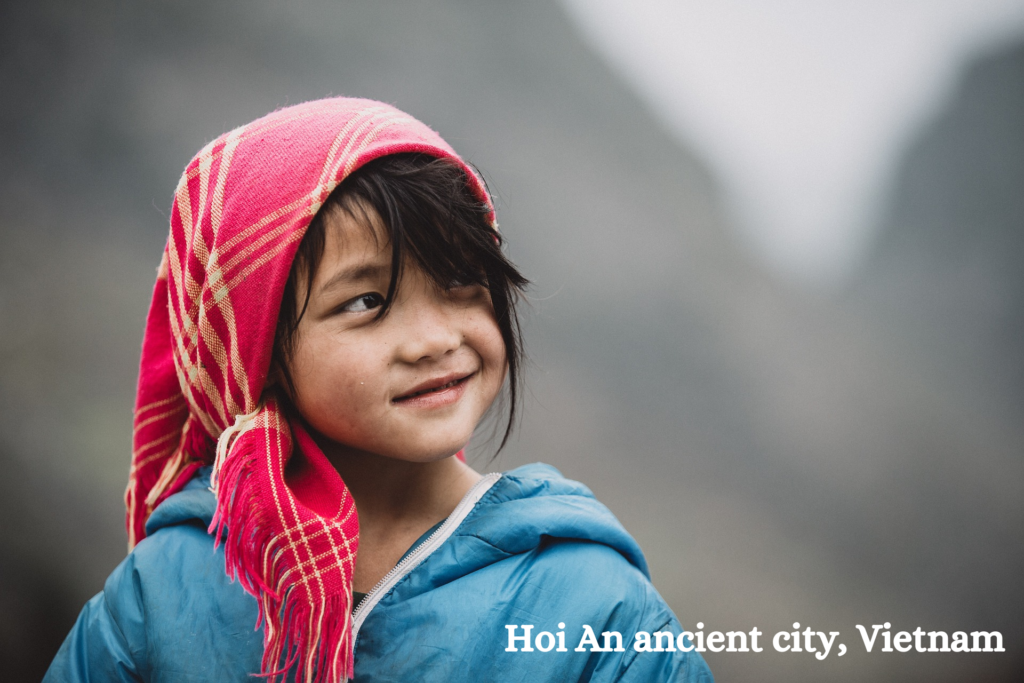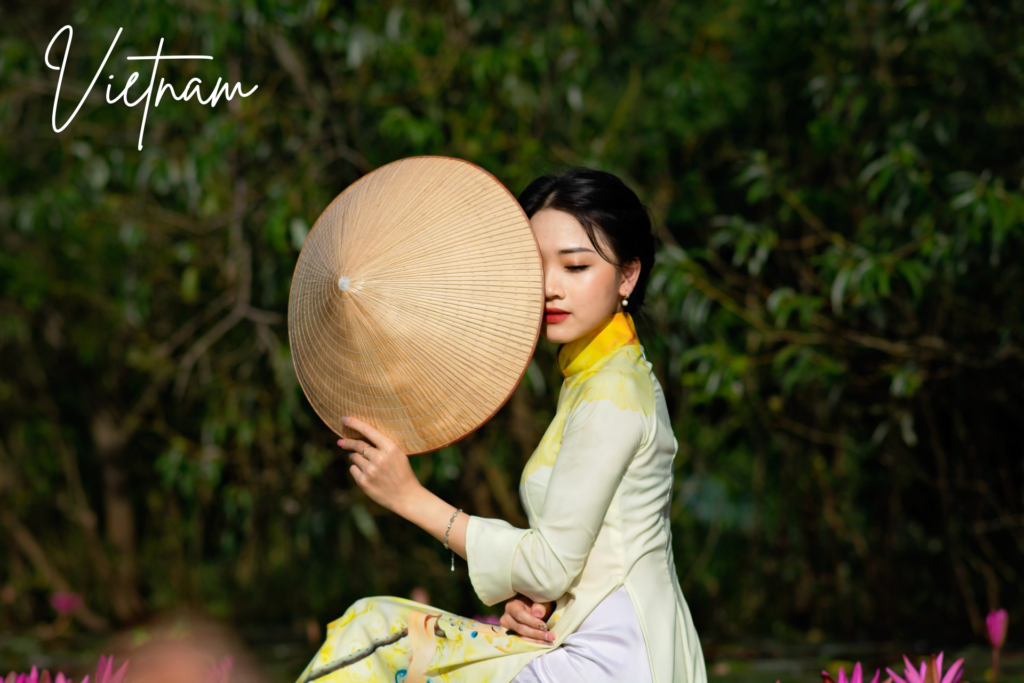I. Introduction
Beauty and fashion are deeply ingrained in Vietnam’s culture, serving as both a reflection of tradition and a sign of its rapid modernization. Over the years, the Vietnamese approach to beauty and style has transformed significantly, blending traditional aesthetics with contemporary global trends. The result is a dynamic and evolving fashion scene that highlights the rich cultural heritage of Vietnam while embracing the future. From the graceful Ao Dai to the latest street style, beauty and fashion in Vietnam represent a unique fusion of old and new.

II. Traditional Vietnamese Beauty Standards
Vietnamese beauty standards have historically been rooted in the ideals of natural elegance and modesty. In the past, beauty was often defined by long, straight black hair, fair skin, and a graceful demeanor. These features were not only seen as physical attributes but also reflections of a woman’s character, symbolizing purity and inner beauty.
At the center of traditional fashion is the Ao Dai, a long, flowing tunic worn over trousers, which has long been considered the epitome of feminine grace. The Ao Dai, with its flattering silhouette, represents the traditional Vietnamese ideals of modesty and sophistication. It continues to be a symbol of cultural pride, worn on formal occasions, holidays, and even modern-day fashion shows.
Traditionally, Vietnamese women have embraced a natural beauty regimen, focusing on minimal makeup and simple hairstyles. The emphasis has been on soft features and delicate looks, with beauty being something understated and effortless.
III. Modern Beauty Trends in Vietnam
In recent years, the beauty landscape in Vietnam has seen significant changes, driven by global influences, particularly from Korea and Japan. Skincare has become a crucial part of daily beauty routines, with Vietnamese women placing a strong emphasis on maintaining clear, youthful skin. Korean beauty (K-beauty) trends such as the 10-step skincare routine, sheet masks, and serums have become extremely popular.
Many women are also turning to beauty treatments such as skin whitening, facials, and even cosmetic enhancements like eyelid surgery or Botox to achieve their desired look. While some of these treatments are influenced by global beauty standards, they are also adapted to fit Vietnamese preferences for soft, smooth skin.
When it comes to makeup, the trend is still towards natural beauty, with light, dewy looks being favored. However, there is a growing number of women experimenting with bolder colors for the eyes and lips, often taking cues from international beauty influencers. Vietnamese women typically opt for soft tones on their skin and cheeks, complemented by natural brows and bright red or pink lipstick.

IV. The Evolution of Fashion in Vietnam
Vietnamese fashion has evolved from the elegant and traditional Ao Dai to encompass a wide array of modern styles influenced by Western trends. Over the past decade, the younger generation has embraced a more contemporary wardrobe that includes Western fashion staples such as denim, streetwear, and athleisure, while still incorporating elements of Vietnamese heritage.
Vietnamese fashion is increasingly influenced by global trends, particularly from neighboring countries like Korea and Japan, as well as major fashion capitals such as Paris, New York, and Milan. Fashion shows in Vietnam regularly feature designers who blend traditional fabrics and patterns with modern cuts and styles, creating a unique fusion of East and West.
Local designers such as Thuy Nguyen and Cong Tri have gained international recognition for their innovative designs that incorporate traditional elements, such as silk and embroidery, into high-fashion garments. These designers have played a crucial role in shaping the modern Vietnamese fashion identity, fusing cultural pride with modern aesthetics.
V. Street Style and Urban Fashion in Vietnam
Vietnam’s major cities, particularly Hanoi and Ho Chi Minh City, are fashion hubs where urban trends thrive. The street style in these cities is a blend of casual and chic, with young people effortlessly combining functionality with fashion. Streetwear has become particularly popular, with oversized jackets, graphic tees, sneakers, and denim dominating the urban fashion scene.
In Hanoi, you will often see a mix of traditional and modern clothing, with some women wearing the Ao Dai on special occasions while embracing a more casual look on regular days. In Ho Chi Minh City, fashion is a bit more experimental and bold, with young women and men following international trends closely, while adding their own personal touch.
Accessories play a key role in completing any look, with bags, jewelry, and hats being essential parts of a fashionable outfit. Women often mix and match these pieces to add personality and flair to their ensembles, with items like chic handbags, sunglasses, and minimalist jewelry completing their looks.
VI. Social Media and Beauty Influencers
The rise of social media has transformed Vietnam’s beauty and fashion landscape. Platforms such as Instagram, YouTube, and TikTok have become vital in shaping the beauty ideals of young Vietnamese women. Influencers and beauty bloggers are particularly influential, offering makeup tutorials, fashion tips, and product recommendations that drive the latest trends.
Beauty influencers like Changmakeup and fashion bloggers like Phuong Ly have amassed large followings and are helping to define beauty and fashion standards in the country. These influencers regularly collaborate with brands and local designers, making them powerful players in the industry and helping to bring global trends to Vietnam’s younger generation.
VII. Sustainability in Vietnamese Fashion
As the global fashion industry faces increasing pressure to adopt more sustainable practices, Vietnam’s fashion scene is also evolving towards eco-friendly options. Many consumers, especially younger ones, are becoming more conscious of the environmental impact of their clothing choices.
Several local brands are emerging that emphasize sustainable fashion, such as using natural materials, promoting slow fashion, and ensuring ethical production methods. Brands like Metiseko and Viet Tien are paving the way for a more eco-conscious fashion industry in Vietnam, offering stylish yet sustainable alternatives to fast fashion.

VIII. Conclusion
Vietnam’s beauty and fashion scenes have undergone significant transformations, reflecting the country’s blend of traditional and modern values. From the timeless elegance of the Ao Dai to the latest global trends, Vietnamese women have embraced a unique approach to beauty and style, one that is ever-evolving.
As Vietnam moves forward, its fashion industry is poised to become more innovative and sustainable, with local designers and influencers playing a key role in shaping its future. The fusion of tradition and modernity will continue to define beauty and fashion in Vietnam for years to come.


